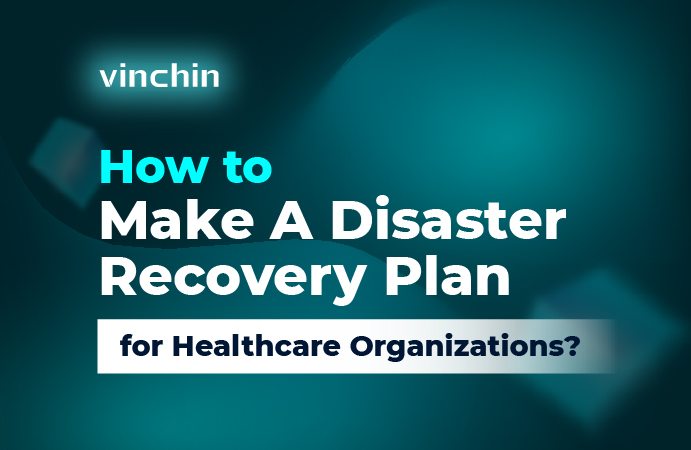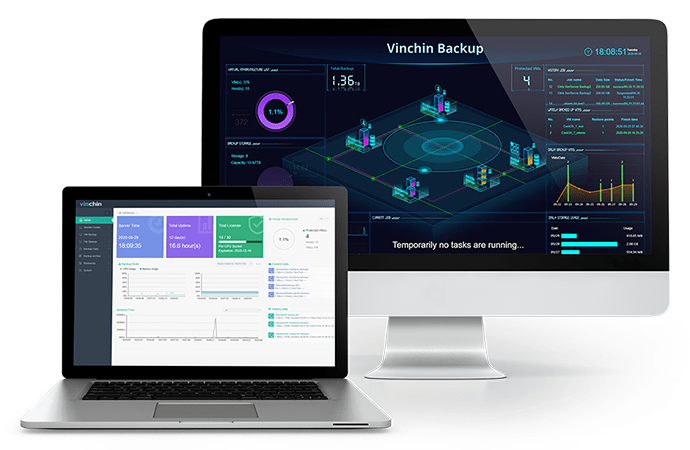-
5 Tips for health organizations to make disaster recovery plan
-
Backup VM and database with Vinchin Backup & Recovery
-
Sum Up

To better manage businesses and provide services, healthcare organizations often use the information systems like HIS, PACS, EMR, LIS, CIS, etc. to simplify the staff's work and improve the patients' experience.
Although information systems bring convenience, they also bring new trouble. Information systems can help healthcare organizations better serve the patients only if the hardware and software can function properly.
Many hospitals must have seen the consequence of server downtime. If the hardware is down, the applications will stop working. This might cause that doctors can't use the electronic health record or the patient's registration process will get stuck. Then there will be complaints all around the hospital.
There are also some acts like HIPAA, Health Insurance Portability and Accountability Act, which clearly how healthcare organizations should protect sensitive data and crucial business continuity so every healthcare organization should know that disaster recovery is important. It will avoid loss of business and penalties from the supervision department.
5 Tips for health organizations to make disaster recovery plan
To make a proper disaster recovery plan, you can follow the steps below,
1. Know the IT infrastructure
IT infrastructure includes the hardware and the software. Before you have a plan for disaster recovery, you should have a list of hardware and software which are used now. There could be some connection between hardwrae and software like certain server is used for running certain software.
It is suggested to list the business systems first and then attach which servers they are running on.
2. Know the potential risk
For IT environment, one of the most common problems is data loss. Sometimes it is caused by software bugs, sometimes users' incorrect deleting, and sometimes the virus.
Except for data loss, users' experience is also very important so you should at least know why the systems get slow or stuck.
To know other potential risks, you should find the terminals and end users of the systems to know their real experience.
3. Meet regulatory compliance
This is very important because you might find everything goes fine but there are tickets sent to you if your organization doesn't meet regulatory compliance.
Therefore, you should know the local regulations for your organization. For example, if you are a healthcare organization in America, you should make your organization HIPAA compliant.
4. Make a disaster recovery plan
A disaster recovery plan mainly includes how to prevent data loss and how to recover business systems.
In the data loss prevention part, you can write how to backup data, how to prevent data from being stolen or damaged by the attacker, how to train the staff to protect data, etc.
The business systems are not the same important, so in the disaster recovery part, you can list all the business systems and then divide them into different groups and make different plans. For example, the level 1 business systems should be backed up every 3 days and recovered in 15 minutes in the event of an emergency and the level 2 business systems should be backed up every way and recovered in 10 minutes.
5. Test the disaster recovery plan
To make sure the disaster recovery plan can work for you in the event of an emergency, you should test the plan in test environment and if possible, monitor the backup system to make sure you always have a chance to recover data. If you would like to perfect your plan, here is a disaster recovery plan checklist.
Backup VM and database with Vinchin Backup & Recovery
Vinchin Backup & Recovery is a professional backup and recovery solution for VM and database, supporting VMware vSphere, Hyper-V, Citrix Hypervisor (XenServer), XCP-ng, Red Hat Virtualization, oVirt, OpenStack, Oracle Linux KVM, Sangfor HCI, MySQL Database, Oracle Database, MS SQL Server, ect.

There are many healthcare organization cases like Brazil St. Vincent de Paul Hospital, Turkey Denipol Hospital, Thailand Samutprakarn Hospital, etc.
Vinchin Backup & Recovery can help you easily deploy the backup system with agentless backup technology. You will quickly add massive VMs by adding their hosts and it will also be convenient to make VM backup later.
There will be a user-friendly web console to let you easily select VMs to backup without special training. You can make VM backup with many useful strategies like schedule, incremental backup, data compression, data encryption LAN-free backup, etc.
Vinchin Instant Recovery technology can help you recover a failed VM in 15 seconds and Cross-platform Migration makes you easily move VM between different hypervisors with VM backup (Instant Recovery and Cross-platform migration are not supported for Hyper-V for now).
Vinchin Backup & Recovery ransomware protection technology will protect backup storage from being modified or deleted by unauthorized applications and there are also many cases that Vinchin helps customers recover virtual environment from ransomware attack.
Vinchin Backup & Recovery has been selected by thousands of customers and you can also start to use this powerful system with a 60-day full-featured free trial. Just click the button to get the installation package.
Sum Up
IT infrastructure has helped healthcare organizations simplify the staff's work and better serve the patients but disaster recovery is also important to protect business continuity and avoid tickets.
You can follow the tips in this post to make a disaster recovery plan step by step.
Vinchin Backup & Recovery can also help you easily make disaster recovery plan for virtual environment. Don't miss the free trial.
Share on:








